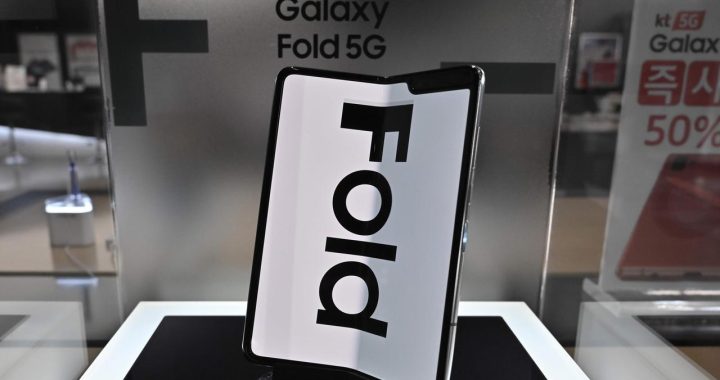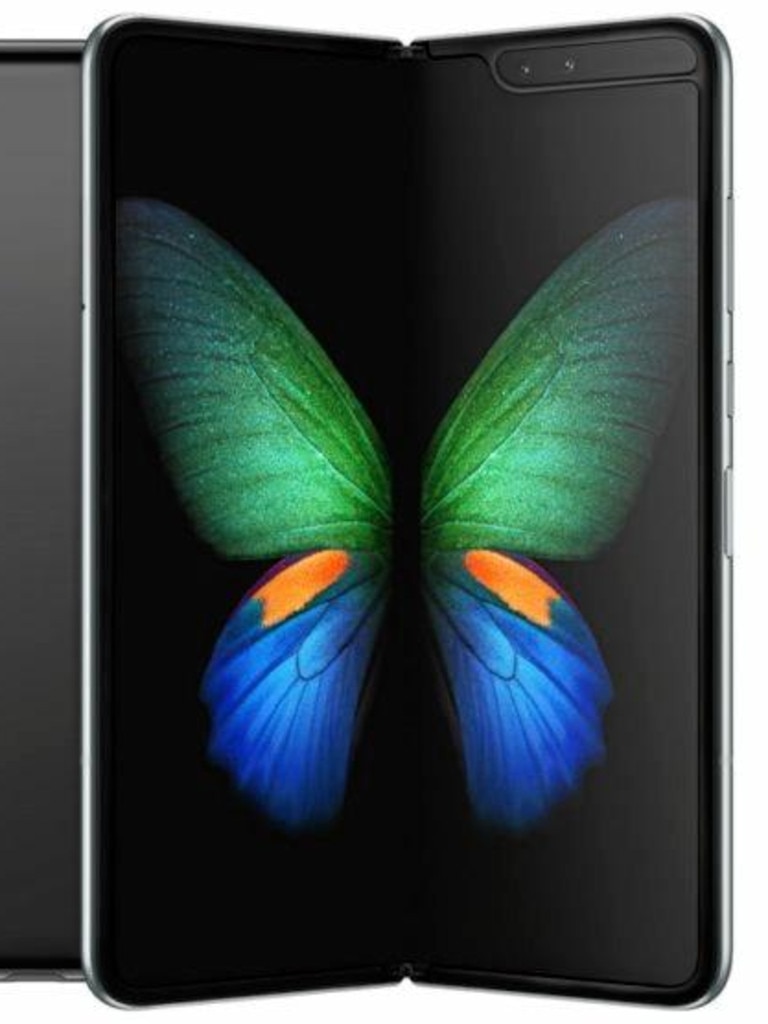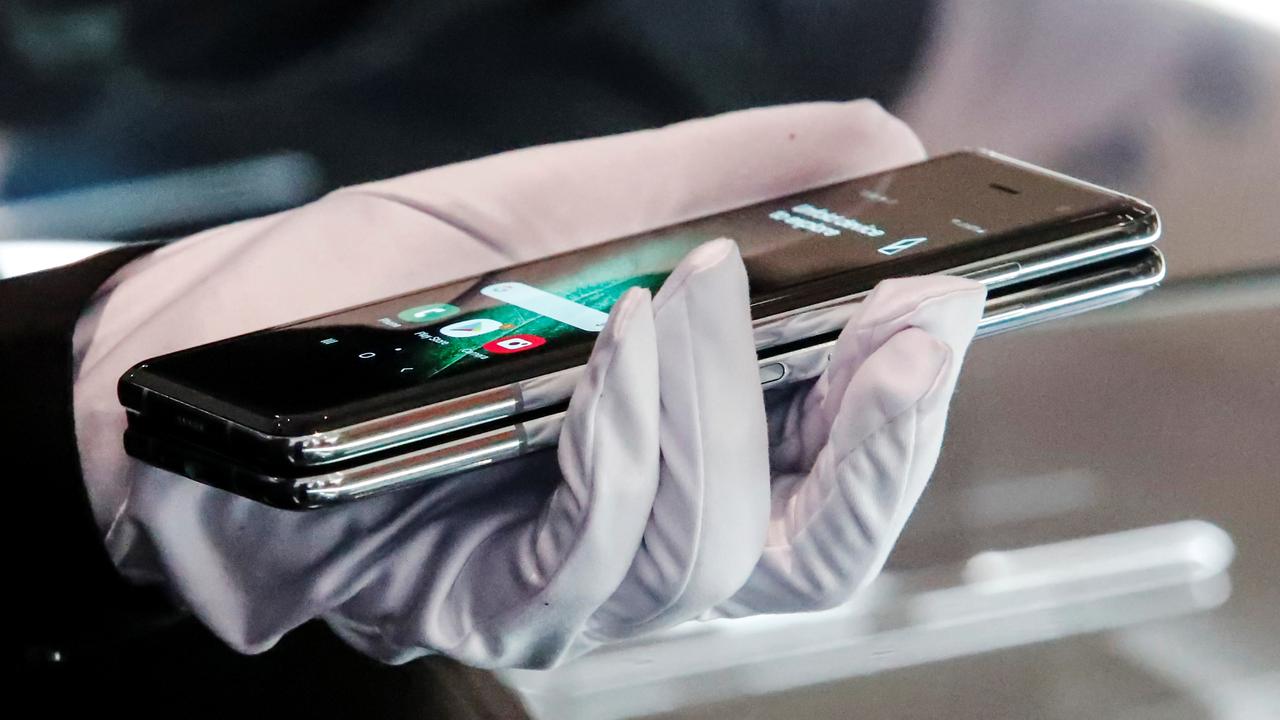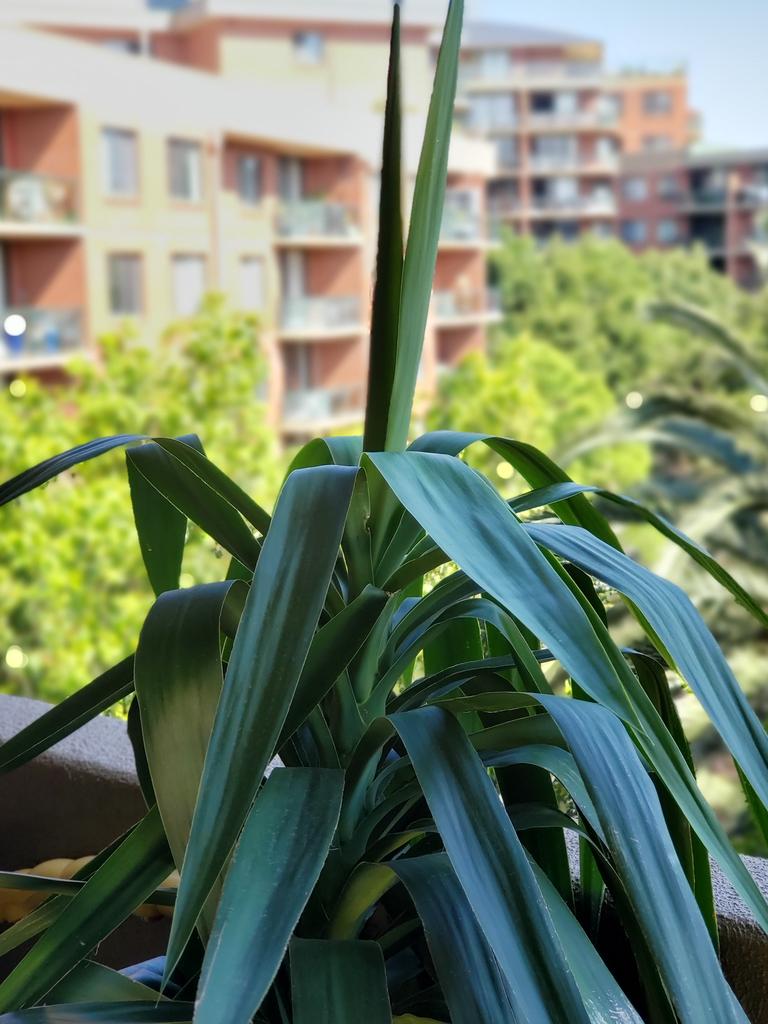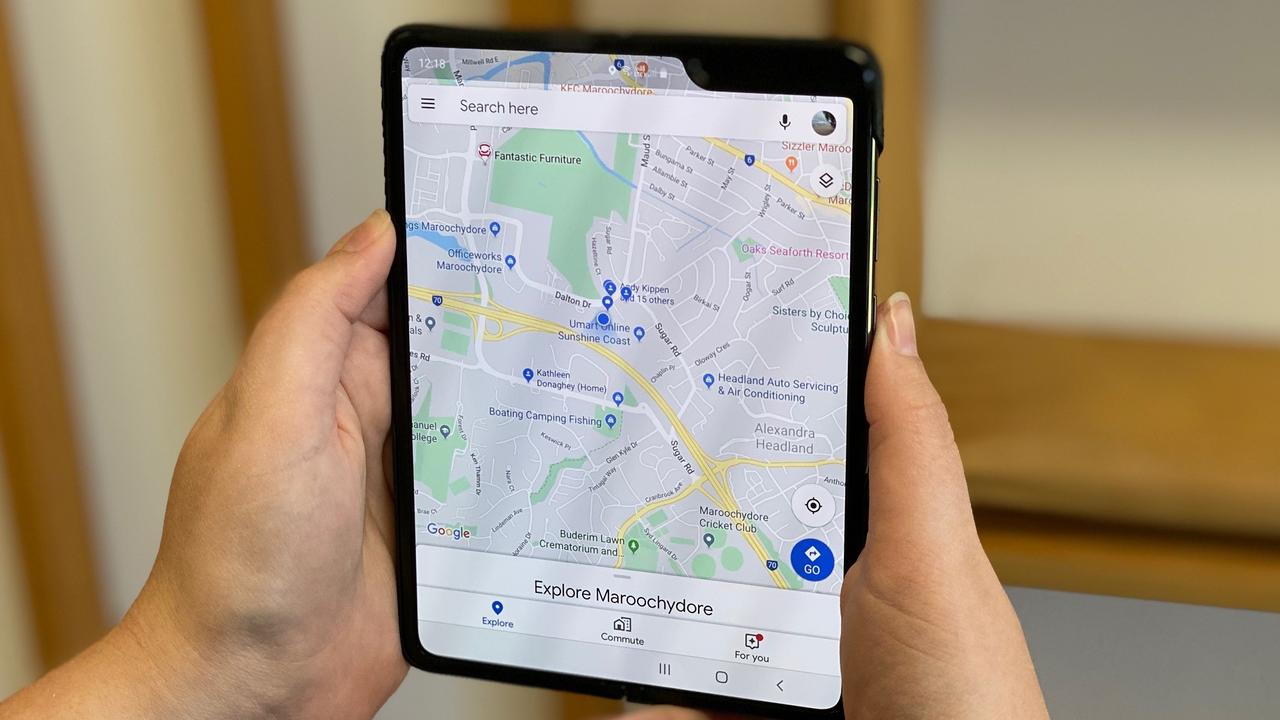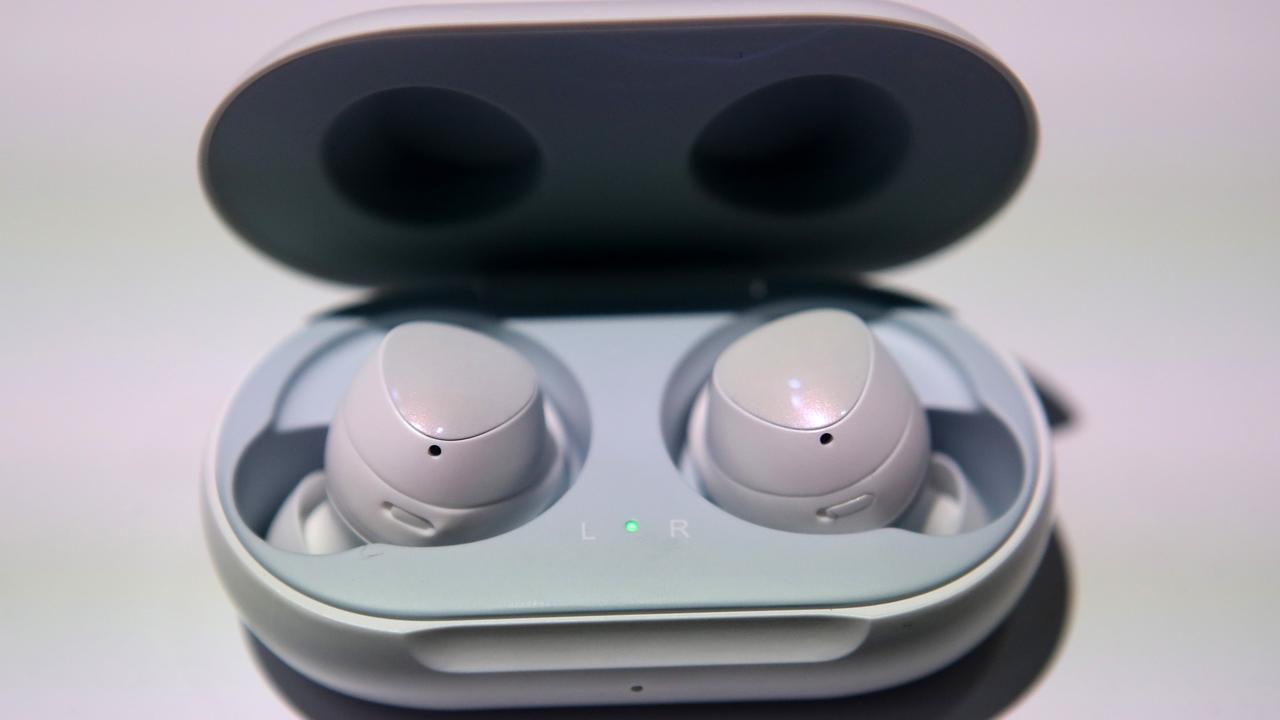After an embarrassing start, Samsung has released its foldable screen smartphone in Australia.
The Samsung Galaxy Fold is a big moment for the company and for folding-screen phones. The Fold’s 7.3-inch “infinity flex display” is a detailed and bright technical marvel.
The question is whether this new development is useful enough to have a future. Can foldable screens bridge the gap between being a lightweight and usable mobile phone on the one hand and a productive tablet on the other?
The Galaxy Fold would have been for sale in April this year if things had gone to plan. Its launch was delayed when reviewers reported breaks in the display. On one phone, dirt got underneath the screen, causing it to bulge and eventually fail.
The failure of other phones was almost comical. Reviewers mistook a thin film on the display for a screen protector and peeled it off. They didn’t realise they were peeling off a necessary part of the display structure. Their screens went entirely black across time, like overripe bananas.
Samsung, which had worked on the phone for eight years, had to go back to the drawing board.
The company was showing off a flexible display as early as 2011 at the Consumer Electronic Show in Las Vegas. Several manufacturers had worked on folding screens at that time.
I saw one that folded around your forearm being developed by Hewlett-Packard at its labs in Palo Alto, California. It was for military use. Electricians in the field could refer to a circuit diagram displayed on one arm as they fixed a device with the other.
Six months after the missteps the Galaxy Fold is on the market, and so far so good for my review unit. There’s no sign of a dog-ear in the plastic layer in the corner of the screen beckoning me to peel it off. You can see a crease in the middle of the unfolded screen when off.
The Galaxy Fold screen is backed by hinges with interlocking gears that click when you fully flex the device. You feel it lock into place. It also closes decisively. The foldable screen’s AMOLED display has about half the pixels of 4K, with 362 pixels per inch. It’s impressive quality.
MORE REVIEWS FROM CHRIS GRIFFITH
iPad mini a bright light in tablet sales;
Tapping the tablet for more uses
The inside screen is hidden from view and protected. Samsung includes a 4.6-inch second screen on the outside front cover so you don’t have to unfold it in a hurry. The outside screen is also good quality, with an impressive 399 pixels per inch.
You can open any app by flicking up from the bottom and swiping sideways. You can have multiple home screens as you would on a regular phone. The phone’s operating system is based on Android 9 (Pie).
Compared with the Samsung Galaxy Note10+, the Galaxy Fold is heavier (276g v 196g), thicker, yet a whisker shorter and narrower (62.8mm v 77.2mm).
The narrowness lets it slip into your pocket relatively easily. It slips into the front jeans pocket with the top just inside the lip, removing the sensation of carrying around a dead fish.
Weight-wise, the unfolded phone can be held in one hand, with fingers supporting the back as you scroll with the other hand. One-handed operation is easy when folded and narrow.

Samsung offers nice continuity between the inside and outside displays. If you display email on the outside screen it will display on the unfolded screen when you open it. Google Maps looks especially nice with the book open.
You can split the unfolded screen and have two or even three apps displaying together. You select these additional apps from a menu at right. Two apps works OK for me, three apps is a stretch.
I wouldn’t call this a gaming tablet but I could comfortably play my favourite, the Australian-produced Train Conductor World game, which involves quickly dragging trains across the screen with my finger. The Galaxy Fold screen was up to the job.
I thought I wouldn’t like the Galaxy Fold for consuming media. The unfolded screen dimensions are unfamiliar. But it’s a joy when you scroll down a web page, viewing high-resolution images and reading the larger text amid plenty of white space; the same when viewing photos.
The unfolded screen is 117.9 x 160.9mm, which is squarish. Movies and videos won’t fit precisely but Fold minimises the issue if you switch to viewing in landscape. You still get black bars top and bottom and the camera array (notch area) knocks out a bit of the image in the corner.
Nevertheless, viewing movies is a pleasant experience. Sound is loud but lacks bass. Samsung generously throws in a pair of wireless Samsung Galaxy Buds in the box, which boosts the audio experience. Given you are paying $2999 for the Galaxy Fold, Samsung can afford to be generous.
The inward-folding screen complicates the front-facing camera set-up. It means you have one 10MP selfie camera inside and another identically specced 10MP selfie camera on the folded screen.
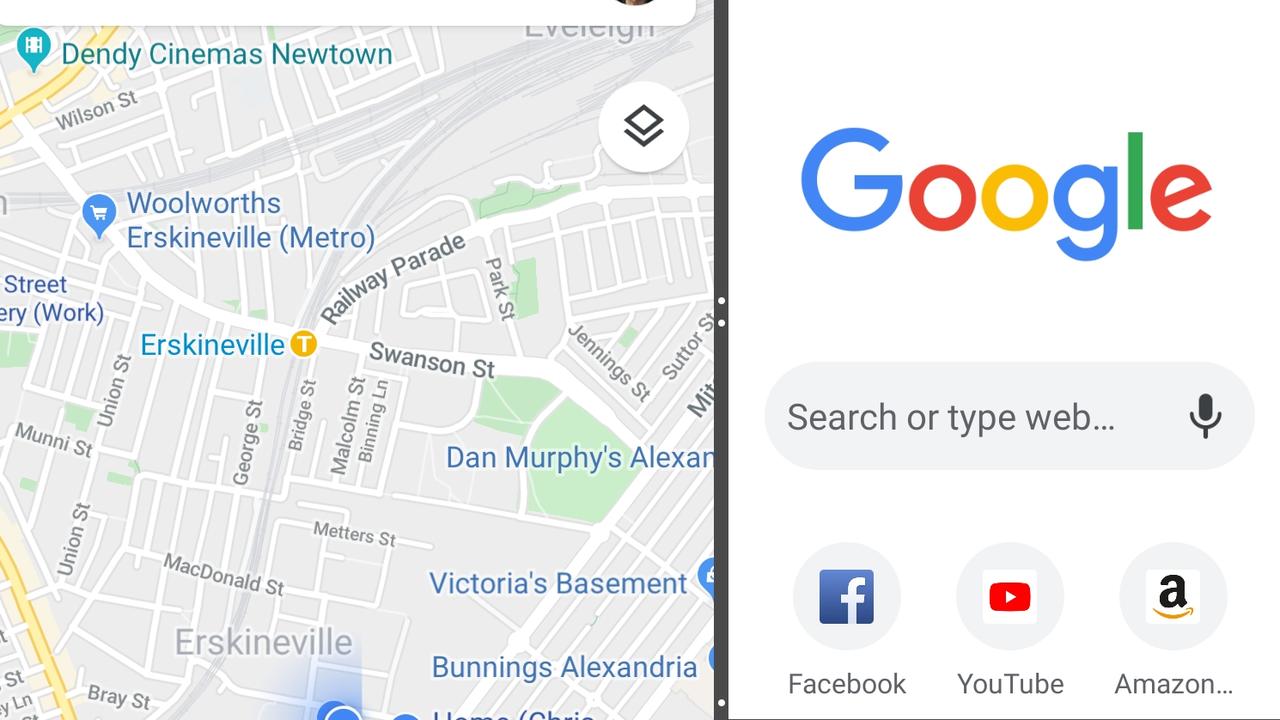
Unfolded, there’s an 8MP depth sensor that supports face recognition. It’s fast. (The phone also has a fingerprint sensor at the side.) Don’t underestimate the rear triple camera just because it’s a foldable. There are three lenses: 16MP ultra-wide, 12MP wide-angle and 12MP telephoto with decent shot options. Live focus, photos and video, panorama, food, night, super-slo mo and pro modes are included. The rear camera supports HDR 10+ recording. You can still access the back-facing camera with the phone folded.
Picture quality is very good. I took good snaps of plants with the Bokeh effect (blurred backgrounds), although it didn’t do so well with Bokeh selfies, blurring my eyes. It took a nice panorama of our garden.
Samsung throws in other features including fast charging, wireless charging and a wireless power-share capability where the phone charges other devices.
Be careful with the Fold when out and about; it is not rated for water and dust resistance. It also doesn’t support the Samsung S-Pen for scribbling and drawing.
As a productivity device, Fold’s limitation is the on-screen keyboard. The keyboard on the 7.3-inch display is big enough to type on, but not with any speed. The keys are just too close together. You could take a wireless keyboard around with you but if you do that you might as well buy a larger tablet computer.
My final reservation is wear and tear on the screen and hinge, especially if dust gets into the mechanism. Samsung claims the hinges will survive being opened and closed 200,000 times. The company says you get a standard 24-month warranty and for 12 months customers are entitled to one Fold display repair for $220.
Samsung is not the only folding phone around. China’s Royole is up to the second generation of its FlexPai. The Huawei Mate X looks great but its launch outside China could be affected by the US trade ban. Xiaomi, Motorola and Oppo have units on the drawing board.
Published in The Australian newspaper
